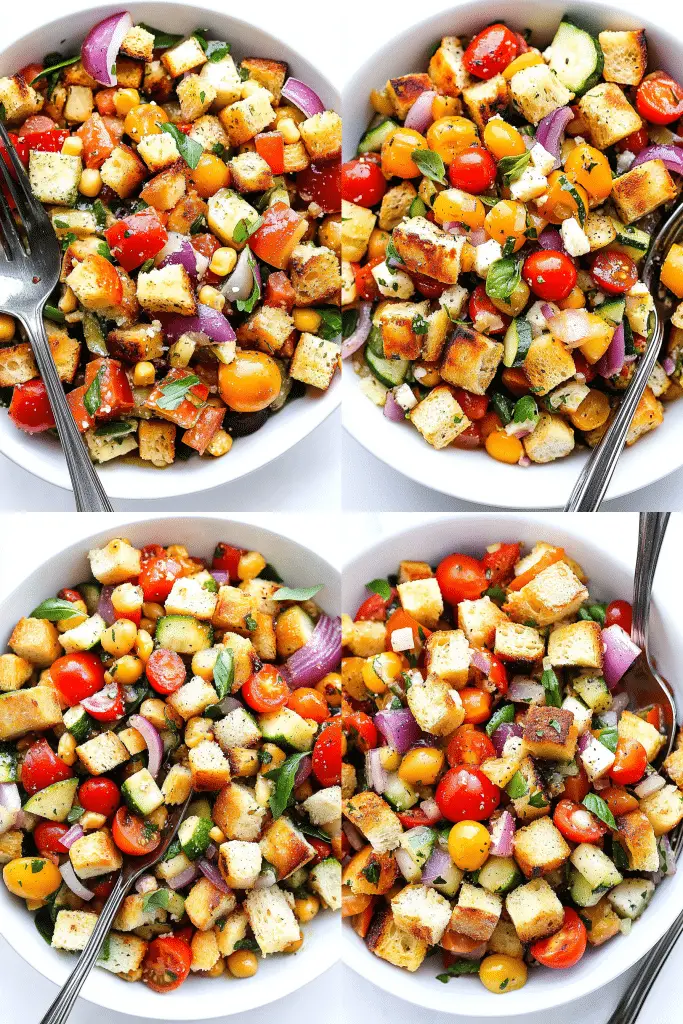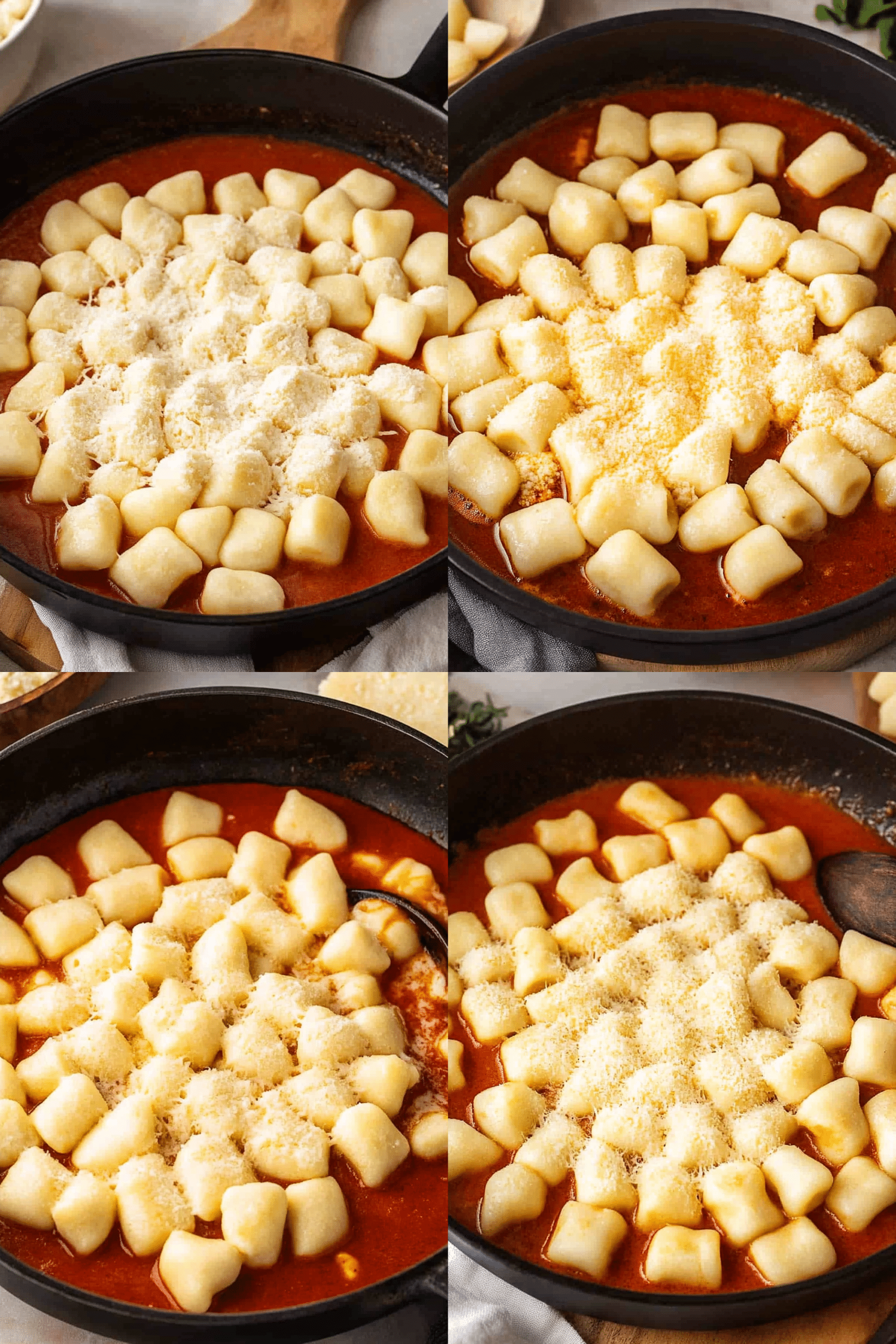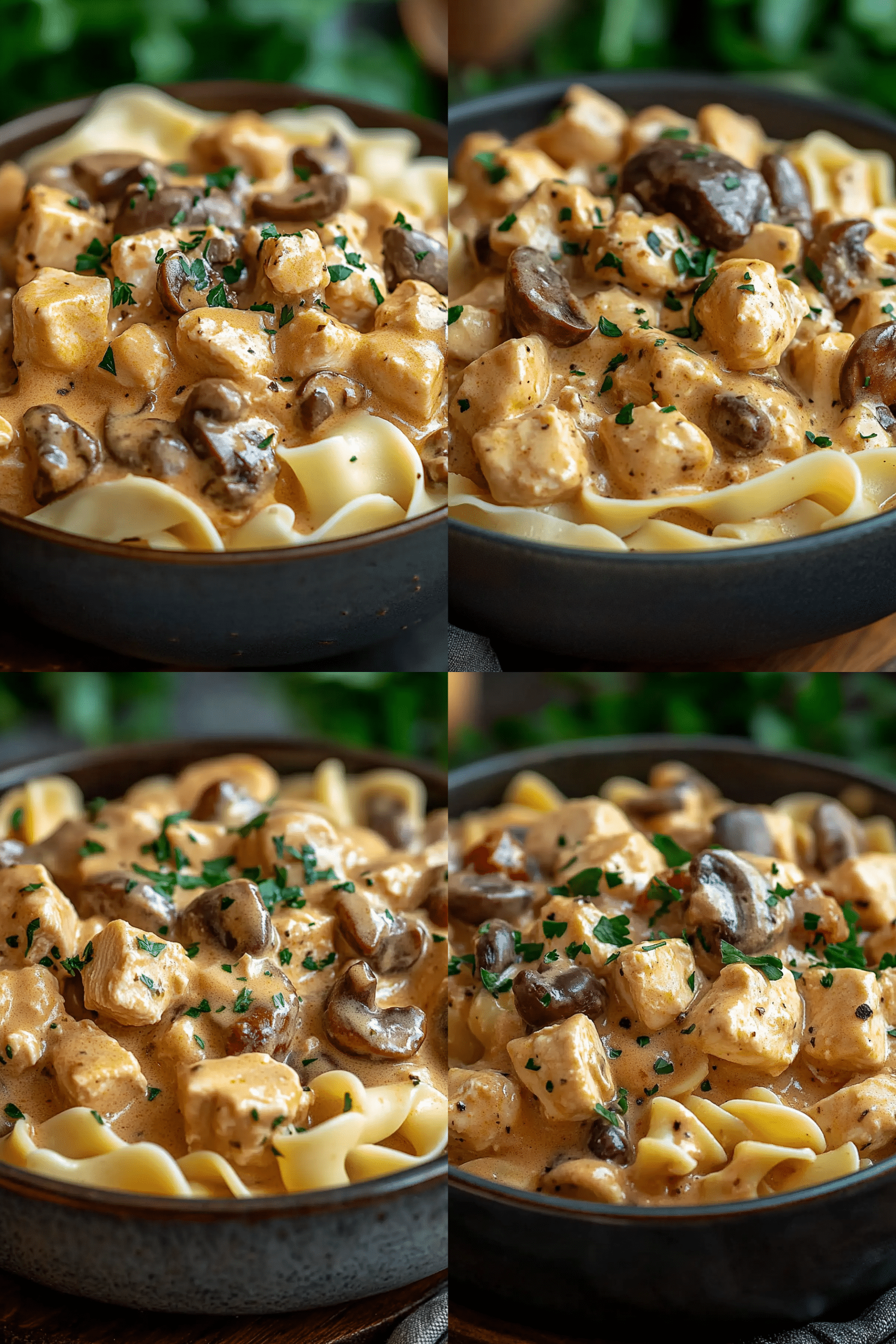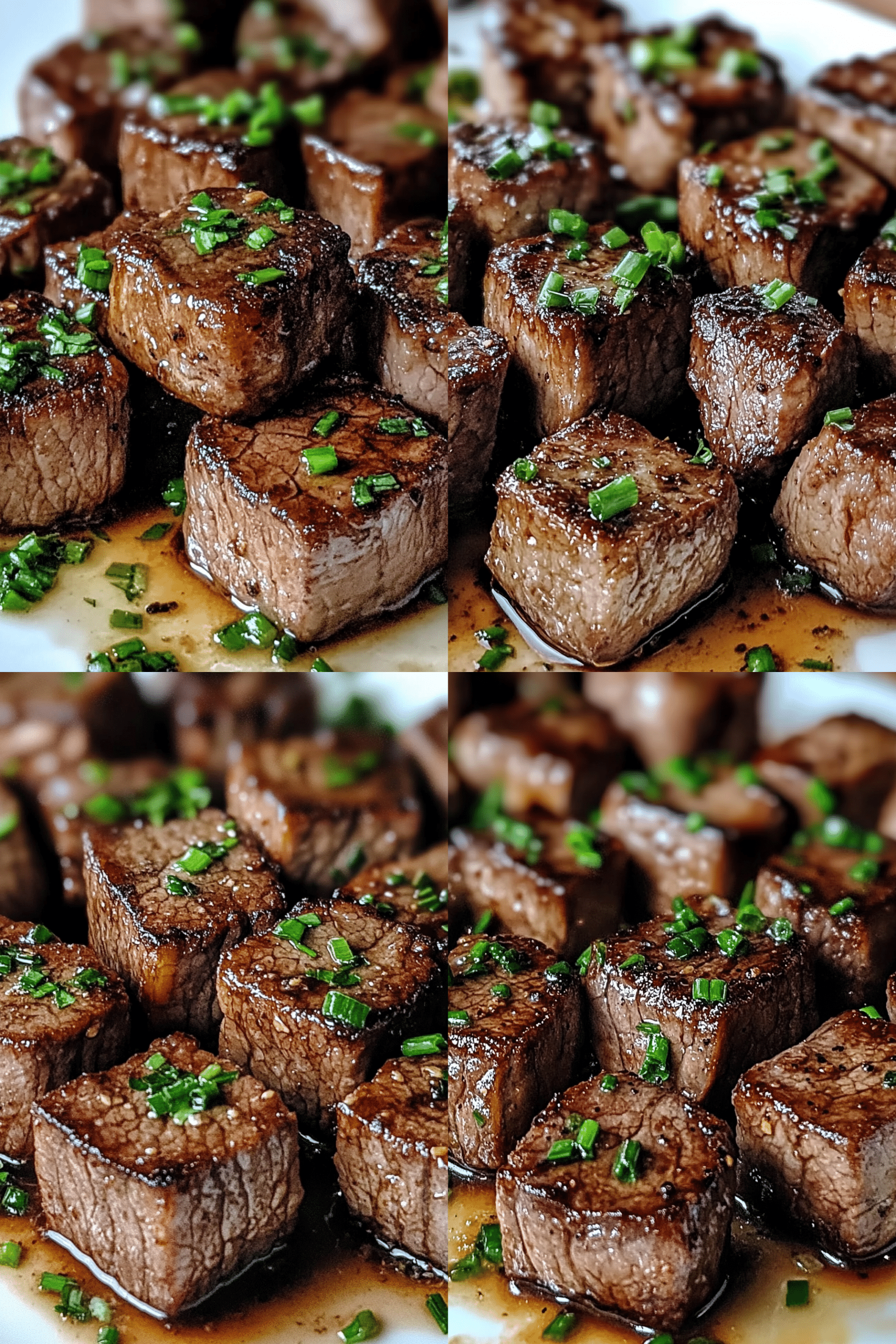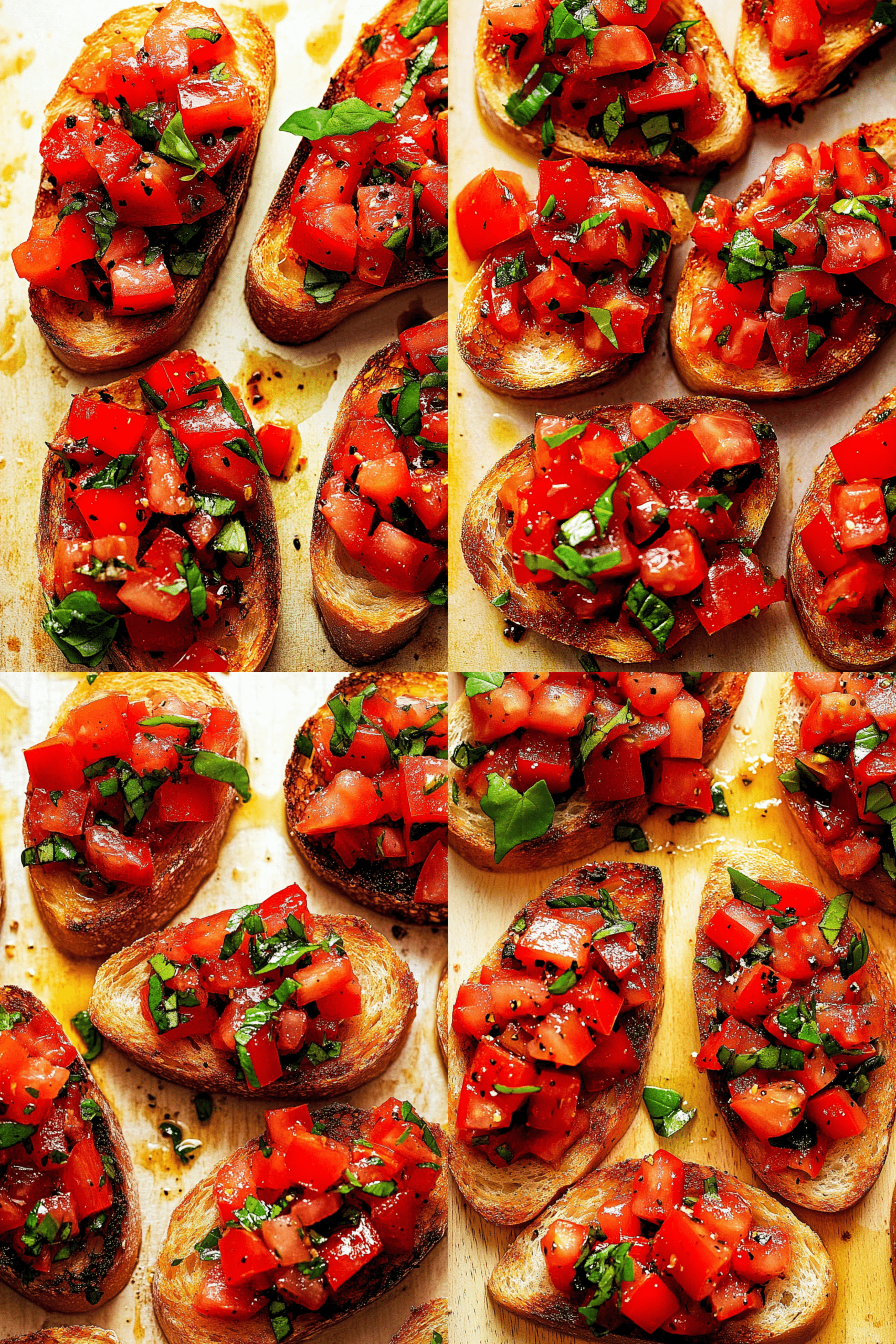Oh, this Summer Panzanella! It’s honestly one of those dishes that just screams sunshine and lazy afternoons to me. I remember the first time I ever made it – it was a scorching hot day, and I was absolutely dreading turning on the oven. My grandma had just given me an insane amount of tomatoes from her garden, and I knew I had to do something amazing with them. Panzanella, that glorious Italian bread salad, popped into my head. Now, I know what you might be thinking: bread in a salad? But trust me, this is not just bread. It’s the rustic, slightly chewy, flavor-soaked hero of the dish. This Summer Panzanella has become my go-to for potlucks, weeknight dinners when I want something light but satisfying, and especially when I have a bounty of ripe produce begging to be used. It’s miles better than a sad, wilted green salad when you want something that actually fills you up and tastes like pure summer joy. And the best part? It’s ridiculously forgiving and gets better as it sits, making it a lifesaver for busy hosts!
Thank you for reading this post, don't forget to subscribe!What is Summer Panzanella?
So, what exactly is this magical dish? At its heart, Summer Panzanella is an Italian bread salad that hails from Tuscany. Think of it as a brilliant way to use up stale bread, but transformed into something utterly spectacular. It’s essentially a mix of ripe, juicy tomatoes, crunchy cucumbers, sweet bell peppers, red onion, fresh basil, and chunks of day-old (or even slightly older!) crusty bread, all tossed in a tangy vinaigrette. The bread soaks up all the delicious juices from the vegetables and the dressing, becoming wonderfully tender yet still holding its own. It’s not a delicate, dainty salad; it’s robust, flavorful, and incredibly satisfying. It’s the kind of dish that feels both rustic and elegant all at once, and it’s a fantastic way to showcase the best of seasonal produce. It’s essentially summer in a bowl, and I can’t get enough of it!
Why you’ll love this recipe?
There are so many reasons why this Summer Panzanella has earned a permanent spot in my recipe rotation, and I just know you’re going to fall in love with it too. First off, the flavor is absolutely out of this world. You get the sweetness of sun-ripened tomatoes, the crisp freshness of cucumber, the mild bite of red onion, and the aromatic perfume of fresh basil, all mingled together. Then there’s the bread – oh, the bread! When it soaks up that zesty vinaigrette and all those lovely vegetable juices, it transforms into something truly special. It’s not mushy; it’s perfectly tender with just a hint of chew. The simplicity of this dish is another huge win. You don’t need fancy techniques or hard-to-find ingredients. It’s a humble dish made with everyday items, but the result is something that tastes like it came from a gourmet Italian kitchen. And let’s talk about cost-effectiveness! This is a perfect example of how to create an incredible meal without breaking the bank. Using day-old bread is not only practical but also essential for the texture. Plus, it’s incredibly versatile. I’ve served this alongside grilled chicken, fish, or just on its own as a light lunch. You can easily add in some fresh mozzarella or creamy burrata to make it even more decadent. What I love most about this Summer Panzanella is how it celebrates the peak of summer produce. It’s bright, it’s fresh, and it’s bursting with flavor. It’s a recipe that always gets rave reviews and never fails to impress, even with its simple origins.
How do I make summer panzanella?
Quick Overview
Making this Summer Panzanella is surprisingly straightforward, which is a huge part of its charm! You’ll basically be cubing some day-old bread, toasting it lightly (optional but recommended for texture!), chopping up your favorite summer vegetables, whisking together a simple vinaigrette, and then tossing it all together. The key is letting it sit for a bit so the bread can properly soak up all those delicious flavors. It’s a no-fuss, high-reward kind of recipe that’s perfect for those warm days when you want maximum flavor with minimum effort. It truly comes together in a flash, and the waiting period is mostly just for the flavors to meld beautifully.
Ingredients
For the Bread:
You’ll need about 1 pound of crusty, day-old bread. Think of a good rustic loaf, a baguette, or even a ciabatta. The key is that it’s not fresh and soft; it needs to be a little dry so it can absorb liquid without falling apart. I always go for a sourdough or a country loaf for the best flavor and texture. If your bread is too fresh, you can leave it out on the counter for a day, or even give it a quick toast in the oven at a low temperature for about 10-15 minutes until it’s dried out but not hard.
For the Vegetables & Herbs:
This is where the summer magic happens! You’ll want about 2 pounds of ripe, juicy tomatoes. Heirloom varieties are fantastic here if you can get them, but any good quality ripe tomato will do. A mix of cherry tomatoes and larger slicing tomatoes adds great variety. Next, one large cucumber, peeled and seeded if it’s very watery, or about half a large English cucumber. Then, one red bell pepper, seeds removed and finely diced. For that lovely sharp kick, half a medium red onion, thinly sliced or finely chopped. And you absolutely cannot forget the fresh basil! A generous handful, torn or roughly chopped. Sometimes I’ll throw in a little fresh parsley too for extra green goodness.
“Made the Summer Panzanella tonight and wow — perfect weeknight dinner. Will definitely make again!”
For the Vinaigrette:
This is simple but so important. You’ll need about 1/2 cup of good quality extra virgin olive oil. For the acidity, 3 tablespoons of red wine vinegar is my go-to. You can also use balsamic vinegar for a deeper flavor, but it will change the color slightly. Two cloves of garlic, minced very finely, and a pinch of salt and freshly cracked Black Pepper to taste. Some people like to add a pinch of dried oregano here too, which is lovely.
Step-by-Step Instructions
Step 1: Prepare the Bread
First things first, let’s get that bread ready. Cut your day-old bread into roughly 1-inch cubes. Don’t worry about making them perfect; rustic is the name of the game here! If you want a little extra texture and flavor, you can toss these bread cubes with a tablespoon of Olive oil and a pinch of salt and pepper, then spread them on a baking sheet. Toast them in a preheated oven at around 375°F (190°C) for about 10-15 minutes, or until they’re lightly golden and a bit crispy. This step is optional but highly recommended, as it gives the bread a bit more structure and stops it from getting too soggy. If you’re short on time, you can totally skip the toasting, especially if your bread is already quite dry.
Step 2: Chop the Veggies
While the bread is toasting (or if you skipped that step), it’s time to get your vegetables ready. Halve or quarter your tomatoes, depending on their size. If you’re using cherry tomatoes, just halve them. Cut your cucumber into bite-sized pieces, roughly the same size as your tomato pieces. Dice your red bell pepper. Thinly slice your red onion – if the onion is very strong for your taste, you can soak the slices in a bowl of cold water for about 10 minutes, then drain them well. This mellows out the sharpness significantly. Roughly chop or tear your fresh basil leaves.
Step 3: Make the Vinaigrette
In a small bowl or a jar with a tight-fitting lid, whisk together the extra virgin olive oil, Red Wine vinegar, minced garlic, salt, and pepper. If you’re using a jar, just pop all the ingredients in, close the lid tightly, and give it a good shake until everything is well combined. Taste it and adjust the seasoning if needed. You want it to be bright and flavorful, as it’s going to dress the whole salad.
Step 4: Combine Everything
Now for the fun part! In a large bowl, gently combine the toasted bread cubes (or just the bread cubes if you didn’t toast them), chopped tomatoes, cucumber pieces, diced bell pepper, and sliced red onion. Add most of the fresh basil, reserving a little for garnish. Pour the vinaigrette over the mixture. Toss everything gently to coat. You don’t want to mash the tomatoes or break up the bread too much; a gentle fold is all you need. Ensure every piece of bread and vegetable gets a little kiss of that dressing.
Step 5: Let It Marinate
This is arguably the most important step for an amazing Panzanella. Cover the bowl and let it sit at room temperature for at least 30 minutes, and up to an hour, before serving. This allows the bread to soak up all the delicious juices from the tomatoes and the vinaigrette, softening beautifully. If you let it sit too long (like several hours), the bread might get too soft, but a good 30-60 minutes is perfect. I’ve found that sometimes, after about 20 minutes, I’ll give it another gentle stir to make sure all the bread pieces have had a chance to soak evenly.
Step 6: Taste and Adjust
Before serving, give the Panzanella a final taste. Does it need a little more salt? A touch more pepper? Maybe another splash of vinegar for brightness? Adjust the seasonings as needed. If it seems a bit dry, you can always drizzle in a tiny bit more olive oil. This is your chance to make it perfect!
Step 7: Serve
Transfer the Panzanella to a serving dish. Garnish with the reserved fresh basil. You can also add a final drizzle of good quality olive oil if you like. Serve it at room temperature. This Summer Panzanella is best enjoyed the day it’s made, but leftovers can be stored in the refrigerator.
“The Summer Panzanella turned out amazing. My kids asked for seconds. Saving this one!”
What to Serve It With
This Summer Panzanella is so versatile, it truly fits into almost any meal. For breakfast, believe it or not, it can be a surprisingly refreshing start to the day, especially if you’ve made a lighter version. Imagine it alongside a perfectly poached egg – the runny yolk mingling with the tomato juices? Divine. For a more traditional brunch setting, it’s an absolute star. It’s lighter than a heavy frittata and offers such a beautiful contrast of textures and fresh flavors. Serve it in a pretty bowl with some crusty bread on the side (though it’s already got bread in it!) and maybe a glass of crisp White Wine or a refreshing sparkling rosé. As a light lunch or dinner, it’s fantastic on its own, but it also pairs beautifully with grilled items. Think simple grilled chicken breasts, a flaky piece of baked salmon, or even some juicy grilled halloumi cheese. If you’re having a potluck or a barbecue, this Panzanella is always a huge hit. It’s a crowd-pleaser that’s easy to transport and always gets devoured. My kids actually love it served as a side dish to simple grilled sausages – it balances out the richness perfectly. For an after-dinner snack that feels elegant but requires zero effort, a small bowl of this Panzanella with a few olives is my secret indulgence. It’s sophisticated comfort food!
Top Tips for Perfecting Your Summer Panzanella
Over the years, I’ve learned a few tricks that really elevate this Summer Panzanella from good to absolutely unforgettable. First, the bread is paramount. As I mentioned, day-old or dried-out bread is crucial. If your bread is too soft, the whole thing can turn into a mushy mess, which is definitely not what we want. Toasting it, even for a short while, creates a foundation that can stand up to the liquids. Secondly, don’t be shy with the tomatoes! Use the ripest, most flavorful tomatoes you can find. If they’re not quite ripe, the salad will lack that essential sweetness and juice. I often quarter my cherry tomatoes and cut larger tomatoes into slightly irregular chunks, as this adds to the rustic charm. For the cucumber, I often give it a good squeeze after chopping to remove excess water, especially if it’s a standard variety, to prevent the salad from becoming watery. When it comes to the onion, slicing it very thinly and, as I mentioned, soaking it in cold water can make a huge difference in its harshness, making it a delightful little crunch rather than an overpowering bite. The dressing is simple, but the quality of your olive oil and vinegar really shines through here, so use the good stuff if you can. My personal favorite is a good quality red wine vinegar. Also, don’t skimp on the basil! Fresh basil is non-negotiable for authentic Panzanella flavor. When you combine everything, be gentle. You’re aiming for a cohesive salad, not a tomato-bread paste. A gentle toss is all it needs to distribute the dressing and ingredients. Finally, that resting period is key! Resist the urge to eat it immediately. Letting it sit allows the flavors to meld and the bread to absorb the goodness. I’ve found that the Panzanella is even better an hour after making it than it is right after tossing.
Storing and Reheating Tips
While Summer Panzanella is best enjoyed fresh, it does store quite well, and there are a few tricks to keep it tasting great. If you have leftovers, the best way to store them is in an airtight container in the refrigerator. It will keep well for about 1 to 2 days. The bread will continue to soften as it sits, which some people actually prefer. If you notice it has become a little too soft for your liking after refrigeration, you can try to revive it slightly. Spread the Panzanella back onto a baking sheet and pop it in a low oven (around 300°F / 150°C) for about 10-15 minutes to help dry out the bread a bit. It won’t be as crisp as when it was first made, but it’s a good way to salvage it. I generally don’t recommend freezing Panzanella, as the texture of the bread and vegetables can really suffer after thawing. The bread becomes very soggy, and the vegetables lose their crispness. If you absolutely must freeze it, do so without the dressing and oil, and then rehydrate the bread separately and add the dressing and fresh veggies when you’re ready to serve. For the glaze, it’s best to add it just before serving for optimal flavor and texture, especially if you are planning on having leftovers. If you know you’ll have leftovers, you can always reserve a portion of the dressing to add later or to freshen it up.
Frequently Asked Questions
Final Thoughts
Honestly, this Summer Panzanella is more than just a recipe; it’s a feeling. It’s the taste of sunshine, simplicity, and making something truly delicious out of humble ingredients. It’s proof that sometimes, the most incredible meals are the ones that don’t require a ton of fuss. It’s perfect for those days when you want something that feels vibrant and fresh, but also satisfying. I encourage you to give it a try, especially when those summer tomatoes are at their peak. Don’t be afraid to play around with the vegetables too – adding in some grilled corn or a sprinkle of feta can be divine! If you love bright, bold flavors and the satisfaction of creating a dish that’s greater than the sum of its parts, you’ll adore this. I can’t wait to hear how yours turns out and what variations you come up with! Please leave a comment below and let me know your thoughts, or share your own Panzanella tips. Happy cooking!
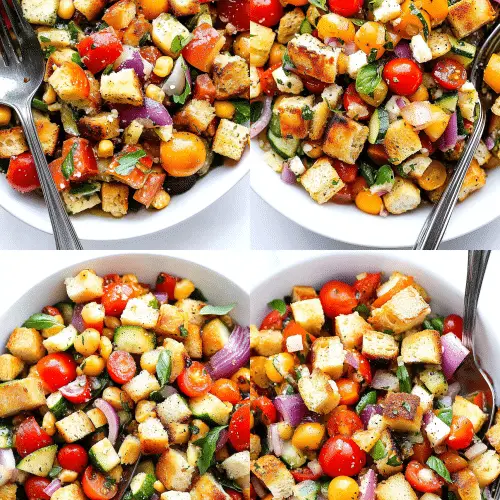
Summer Panzanella
Ingredients
Main Ingredients
- 0.5 loaf stale crusty bread cut into 1-inch cubes
- 2 lbs ripe tomatoes mixed varieties, chopped
- 1 large cucumber peeled, seeded, and diced
- 0.5 red onion thinly sliced
- 0.5 cup fresh basil leaves torn
- 0.25 cup Kalamata olives pitted and halved
- 4 oz fresh mozzarella cubed
Vinaigrette
- 0.33 cup extra virgin olive oil
- 2 tablespoons red wine vinegar
- 1 clove garlic minced
- 0.5 teaspoon salt
- 0.25 teaspoon black pepper
Instructions
Preparation Steps
- Preheat oven to 375°F (190°C). Toss the bread cubes with 2 tablespoons of olive oil, salt, and pepper on a baking sheet. Bake for 10-15 minutes, or until golden brown and toasted. Let cool.
- In a large bowl, combine the chopped tomatoes, diced cucumber, sliced red onion, Kalamata olives, and cubed mozzarella.
- In a small bowl, whisk together the remaining olive oil, red wine vinegar, minced garlic, salt, and pepper to make the vinaigrette.
- Add the toasted bread cubes and torn basil leaves to the vegetable mixture. Pour the vinaigrette over the salad and toss gently to combine. Let it sit for at least 10 minutes to allow the flavors to meld and the bread to absorb some of the dressing.
- Taste and adjust seasoning if needed. Serve chilled or at room temperature.


